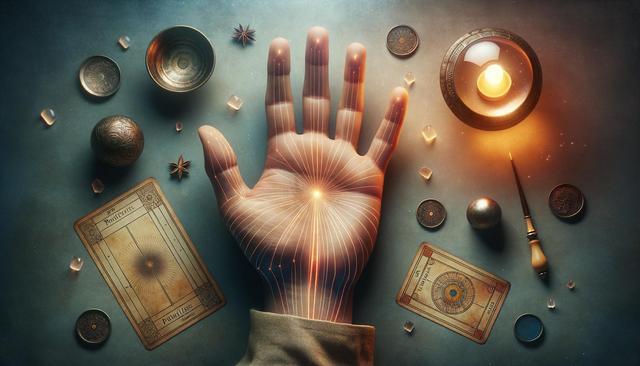The Origins and Philosophy Behind Palmistry
Palmistry, also known as chiromancy, is an ancient practice with roots tracing back to India, China, and Egypt. Over centuries, it has evolved into a respected form of fortune telling and self-discovery. While many associate it with mysticism, palmistry also draws on symbolic interpretation and observation. The essence of this art lies in the belief that the hand is a mirror of the soul and that each line, mount, and curve reveals something about a person’s character and potential. Practitioners of palmistry often study for years to understand the intricate details of hand analysis and to offer meaningful spiritual guidance.
The right and left hands are analyzed differently. Typically, the dominant hand reflects current life circumstances and choices, while the non-dominant hand reveals inherited traits and latent possibilities. This dual-hand approach helps provide a balanced interpretation during a life path reading, offering insight into both potential and progress.
Understanding the Major Lines of the Palm
One of the cornerstones of palmistry is reading the major lines on the palm. These lines are believed to hold specific meanings that correspond to different aspects of life. While interpretations can vary slightly among traditions, most agree on the following primary lines:
- Heart Line: Related to emotional well-being, love, and relationships.
- Head Line: Associated with intellect, decision-making, and communication style.
- Life Line: Often thought to indicate vitality and general life path, rather than lifespan.
- Fate Line: Not present on every hand, this line is linked to career and life direction.
Each line’s depth, curve, and length can provide different messages. For example, a deep and clear head line might suggest strong mental focus, while a fragmented heart line could point to emotional complexity. These interpretations offer valuable tools for personal reflection and spiritual guidance.
Shapes and Mounts: What Your Hand Says About You
In addition to lines, the shape and texture of the hand itself play a central role in hand analysis. There are four primary hand shapes, each corresponding to one of the classical elements:
- Earth Hands: Square palms and short fingers, often associated with practicality and reliability.
- Air Hands: Square palms with long fingers, indicating intellectual curiosity and communication skills.
- Water Hands: Long palms and long fingers, tied to emotional sensitivity and creativity.
- Fire Hands: Long palms with short fingers, often linked to passion, leadership, and energy.
Mounts, or raised areas of the palm, also provide clues during a palmistry session. These fleshy pads correspond to different planets and suggest specific personality traits. For instance, a prominent Mount of Venus might indicate a warm, affectionate nature, while a well-developed Mount of Jupiter could suggest ambition and confidence. These elements work together to form a comprehensive profile during a life path reading.
Using Palmistry for Self-Discovery and Decision-Making
Many people turn to palmistry not just for curiosity, but as a means of gaining clarity in their lives. A thoughtful fortune telling session can offer insights into recurring challenges, hidden strengths, and future possibilities. Hand analysis is often used as a complementary tool alongside other forms of spiritual guidance to make informed decisions.
For those at a crossroads in life—be it in relationships, career, or personal growth—a palm reading may highlight patterns that are otherwise difficult to see. It doesn’t predict the future in absolute terms but rather reflects tendencies and potential outcomes based on current paths. This makes palmistry especially useful for those who want to take a proactive approach to shaping their future.
Benefits of palm reading can include:
- Improved self-awareness and emotional insight
- Clarification of personal goals and obstacles
- Enhanced understanding of behavioral patterns
- Encouragement for spiritual growth and healing
What to Expect in a Palm Reading Session
If you’re considering a palm reading session, knowing what to expect can enhance your experience. Typically, the practitioner will begin with a general observation of your hands—looking at their shape, flexibility, and texture. This initial assessment offers clues about your temperament and energy levels.
Next, the reader will examine the major and minor lines on your palms. Some practitioners also consider the mounts, finger length, and nail shape. A detailed life path reading may include questions about your background to contextualize the hand analysis. While each session is unique, most aim to provide insights that resonate personally and offer meaningful spiritual guidance.
It’s helpful to approach the session with an open mind and a willingness to reflect. Palmistry is not about rigid predictions but about uncovering layers of potential and understanding. Whether you’re seeking deeper self-knowledge or curious about what lies ahead, palmistry can be a valuable tool for personal exploration.
Conclusion: Embrace the Journey of Self-Exploration
Palmistry offers more than just a glimpse into the future—it’s a timeless method for understanding the self. Through the art of hand analysis, individuals can gain a nuanced perspective on their strengths, challenges, and opportunities. Whether used for fortune telling or spiritual guidance, palm reading encourages mindfulness and intentional living.
For those on a journey of self-discovery, a palm reading can be a meaningful step. It invites you to reflect, grow, and navigate life with greater clarity. With an open heart and curious mind, palmistry can become a supportive companion on your path toward personal insight and fulfillment.




Leave a Reply